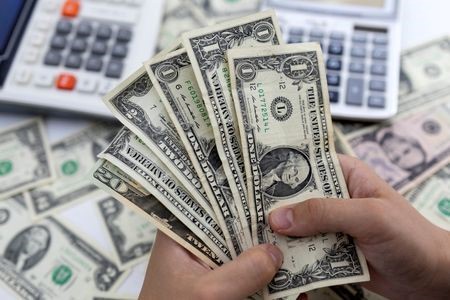




Quarterly Economic Growth Release: More BSP cuts to come
 DOWNLOAD
DOWNLOAD

Monthly Economic Update: Fed catches up
 DOWNLOAD
DOWNLOAD

Inflation Update: Steady and mellow
 DOWNLOAD
DOWNLOAD


Yields slip after jobs report bolsters Fed rate-cut expectations

NEW YORK – Benchmark 10-year Treasury yields slid on Friday following closely-watched jobs data that appeared to show the US labor market weakening, strengthening market expectations that the Federal Reserve will begin to cut interest rates in September.
Nonfarm payrolls grew by 206,000 jobs in June, slightly higher than the 190,000 jobs estimated by economists polled by Reuters. Estimated job growth for May, meanwhile, was revised down to 218,000 positions from 272,000, while April’s job growth was revised down to 108,000 jobs from the previous 165,000.
The unemployment rate rose to 4.1%, slightly higher than the estimated 4.0%.
The labor market has been a key focus for Fed policymakers in their debate over when to begin cutting interest rates. The US central bank has cited the resiliency of the jobs market as a potential catalyst for a possible resurgence in inflation.
“This was not a terrible report, but with the large revisions it shows there are cracks and weaknesses under the surface,” said David Wagner, a portfolio manager at Aptus Capital Advisors. “This keeps the (Fed’s) September meeting a live meeting for a rate cut.”
Futures markets are now pricing in a roughly 73% chance for a 25-basis-point rate cut at the Fed’s Sept. 17-18 meeting, up from a 57.9% chance a week ago, according to CME Group’s FedWatch tool. Overall, markets are pricing in a cumulative 50 basis points in interest rate cuts by the end of the year.
“The downward revisions to the previous two months are consistent with an economic slowdown,” said Jeffrey Roach, chief economist for LPL Financial. “We should expect more rhetoric out of the Fed about labor market conditions and the importance of keeping policy appropriate for their dual mandate.”
The yield on the benchmark US 10-year Treasury note fell 7.1 basis points to 4.276%, leaving it down approximately 20 basis points for the week and near its lowest levels since late June.
The yield on the 30-year bond fell 4.8 basis points to 4.472%.
The two-year US Treasury yield, which typically moves in step with interest rate expectations, fell 8.9 basis points to 4.604%, leaving it at its lowest level since late March.
A closely watched part of the US Treasury yield curve measuring the gap between yields on two- and 10-year Treasury notes, seen as an indicator of economic expectations, was at a negative 33.0 basis points.
(Reporting by David Randall; Editing by Andrew Heavens, Chizu Nomiyama, David Evans, and Paul Simao)
This article originally appeared on reuters.com





 By Reuters
By Reuters